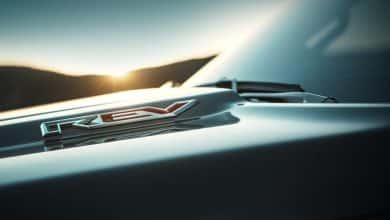Toyota’s Sweatshop

(Cologne, Germany) “We won’t show you everything,” warn our hosts with a burst of laughter. In the premises of Gazoo Racing, a sports subsidiary of Toyota, discretion is essential. If the makeshift museum set up in a room that is too cramped and too low (watch your head if you are over 1.80 m tall) is the only place where it is allowed to move around freely, the other places remain out of reach. visitors.
In these sectors of this enormous building hidden in an industrial district of Cologne, we love secrets. To the point of revealing only sparingly the nature of the work in progress or the names of certain clients. Among these, we find a nautical company whose identity we will never know, but also the McLaren racing team. This mainly uses the huge wind tunnel which, in the past, modeled the design of the Toyotas entered in the Formula 1 World Championship.
50 years of history
Founded in 1972 by Swedish rally driver Ove Andersson, Gazoo Racing was called Toyota Team Europe (TTE). It was an entity that was then well established in Brussels before being relocated in 1979 to Cologne, Germany, where it has since grown steadily. To better meet the needs of Toyota, of course, but also those of its customer teams who defend its colors in competition. This is where the endurance (WEC) and world rally championship (WRC) prototypes are developed. A small production workshop made up of a group of specialized technicians assembles around twenty racing engines here for the World Rally Championship (WRC) Yaris. The assembly requires 14 working days.
Of Formula 1, there is not much left. Apart from half a dozen single-seaters, engines mounted on pedestals and a few trophies that are rarely dusted off. Unlike these five other trophies on which all the spotlights are trained to remind us of the triumphs (2018-2022) of the Japanese manufacturer at the 24 Hours of Le Mans.

PHOTO ÉRIC LEFRANÇOIS, SPECIAL COLLABORATION
Of Toyota’s presence in Formula 1 (2002-2009), there is not much left. A few single-seaters, a handful of engines and rare trophies.
Along with the enviable wind tunnel, Gazoo Racing’s headquarters also houses a state-of-the-art driving simulator. Although the factory pilots each have their own locker to store gloves, helmets and boots, the simulator is not exclusive to them. Private teams can use it for a fee of up to 20,000 euros per day (approximately C$29,000).
Looking to the future
But Gazoo Racing’s raison d’être is not limited to simply rendering services to the outside world.
Some 430 employees from 32 different nationalities work there. All aim to experience future technologies from Toyota.
It is here that the brand’s hybrid system was refined after being integrated into the endurance prototypes.
Currently, Gazoo Racing manages 60 internal projects, and who knows which ones? But, one thing is certain, many gravitate around research towards a greener power supply for our cars. Electricity, of course, but also synthetic fuels and hydrogen, an energy source that could very well propel Toyota’s future endurance prototypes during the 2025 24 Hours of Le Mans. In parallel, Gazoo Racing continues its studies to replace carbon fiber (heavily used in competition and, to a lesser extent, in the vehicles of Mr. and Mrs. Everybody) by a more natural, more ecological and (almost) just as resistant process. Work, research that aims to ensure the transfer of technology from racing to mass production. And vice versa.
The work of Gazoo Racing is already evident on our continent with the Toyota 86, Supra and, more recently, Corolla. Three models which, to obtain the GR (Gazoo Racing) label, passed through the Cologne workshops before embarking on a commercial career. On the menu, higher performance, more dynamic behavior and a more incisive presentation. This last particularity clearly has its followers, since in Europe, several of the brand’s products are offered with the GR Sport package, which unites a clientele more concerned with appearances than performance.












